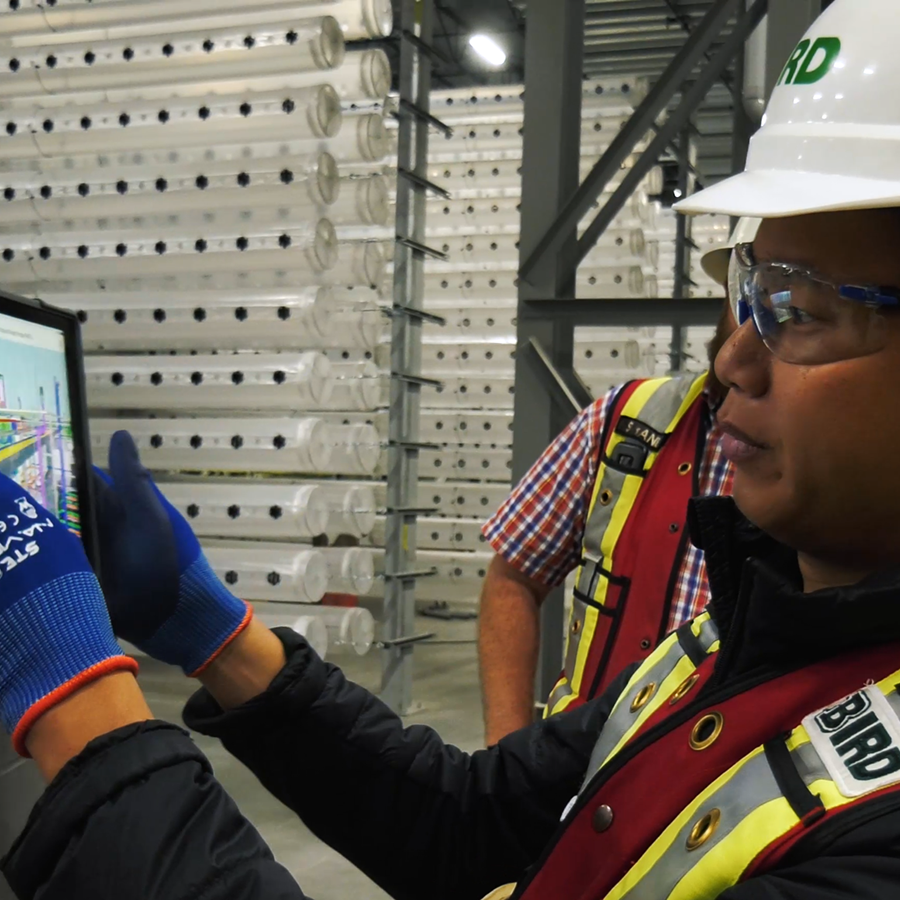“Point cloud data helps us understand various points of time in the project schedule. Safety teams can better anticipate and plan safety instructions and the placement of project safeguards as conditions change.”
—Mohamed Adel, Digital Construction Director, Bird Construction
In late 2024, the U.S. Bureau of Labor Statistics released their construction industry injury and fatality findings for 2023. The federal numbers show the industry needs to do much more to reverse a tragic data spike: The sector posted the highest number of workplace fatalities since 2011 (1,075).
Maintaining a safe work environment presents an enormous challenge to construction industry leaders. The construction process is inherently risky, composed of many moving parts and pieces in a constantly evolving environment. Ongoing safety awareness and training is a core risk mitigation strategy for any safety program. Today many firms also look to technology – particularly reality capture – to augment traditional safety practices.

A Culture of Safety Innovation
Consider Bird Construction, for example, one of Canada’s top five commercial construction companies. Leaders at the 100-year-old firm constantly challenge themselves to advance workplace safety standards.
The “Bird Way” represents a level of worker care and concern Mohamed Adel knows well. As the company’s digital construction director, Adel is tasked with working with Bird safety officers to ensure each employee leaves the jobsite safe and sound each day. “My role within Bird is to not only push BIM (building information modeling) standards, but also safety innovation,” the 16-year industry veteran explains. “Reality capture is a main prerequisite for operational success at Bird.”
“We elevate safety planning for hazard and risk mitigation not just by manual observation, but also in a controlled virtual environment that allows us to rapidly play out and understand ‘what if’ scenarios,” he reports.
Safety Planning with a Point Cloud
Adel says safety planning throughout the industry is often a reactive process, responding to incidents rather than anticipating them through modeling studies.
What hazards can be anticipated eight weeks out? Twenty-four weeks? Or 40 weeks? It varies.
Worksites are dynamic environments. The unexpected is more the rule than the exception, especially in complex projects.
“Point cloud data helps us understand various points of time in the project schedule. Safety teams can better anticipate and plan safety instructions and the placement of project safeguards as conditions change,” he notes.
5 More Safety Benefits of Laser Scanning
That’s just the beginning. Adel also cites five other safety and related benefits the firm derives from laser scanning:
- Better Onboarding. It’s tricky to introduce subcontractors into a partially completed, often unstable construction environment. The adage, “Forewarned is forearmed,” becomes sound advice. To that end, Adel and his team use scanning data to help model-out existing conditions and apply a specialized gaming engine to it. The engine presents a step-by-step virtual walk-through of the site.
“Our trade partners experience the actual site but in a convenient virtual way, say on their smartphone or tablet. No one has to physically walk the site unnecessarily. Virtual onboarding acquaints them with real-time hazards before they set foot on the site,” Adel explains.
- Improved Coordination. A related hazard is the back-and-forth between busy trades and the GC’s self-performing crews.
“There are many situations of overlapping activities,” Adel says. “We could have some people excavating while another group installs a curtain wall. When we reflect point clouds in the model there may be things we didn’t anticipate happening on site. Maybe a trade progressed faster than we expected. Conflicts like this and their consequences are easier to envision with continuously updated point cloud data.”
- Enhanced Safety Compliance. Whether external regulators visit a worksite for safety compliance or key stakeholders require the information, laser scanning provides clear documentation for compliance reporting.
“I do know Bird internally audits sites,” he reports. “Other project managers visit worksites and have to report their observations. There are quarterly audits. There are incentives and rewards for high-performing safety practices in place. Safety is a top priority at Bird. Our chief safety officer reports directly to the CEO.”
- Insurance Cost Savings. It’s no secret the premiums for builder’s risk insurance have skyrocketed in recent years. Bird knows safety investments, like documenting as-built conditions with laser scanning, can yield a sizable insurance dividend.
“Insurers get a sense of what we do. Based on this, there’s often a premium reduction when they assess the technology we use to manage worker safety. They see how we proactively mitigate risk with technology, like laser scanners. They like how we plan ahead in a controlled virtual environment weeks, even months, before an actual safety hazard is there or realized.
“Scanners are a massive risk mitigation tool,” he adds.
Today Bird Construction supports their projects with seven laser scanners, with four dedicated to the building group. “We’ve worked closely with Leica Geosystems for the last six years,” Adel explains. “We chose Leica because of their comprehensive ecosystem. They provide exceptional hardware and a suite of powerful software. This combination has made laser scanning a standard practice in our quality processes.”
- Time Machine Insight. The digital construction expert describes their suite of laser scanners as “time machines.” The ability to throttle across schedule timelines with point cloud speed and accuracy is not only a vast safety planning advantage, but it also presents the company with an irrefutable audit trail in the event of a legal dispute over a mishap.
“Laser scanning is like a time machine. The point cloud data offers insight into what could happen so we can better plan for it. We really appreciate it.”
To learn more, connect with a Leica Geosystems reality capture specialist.






